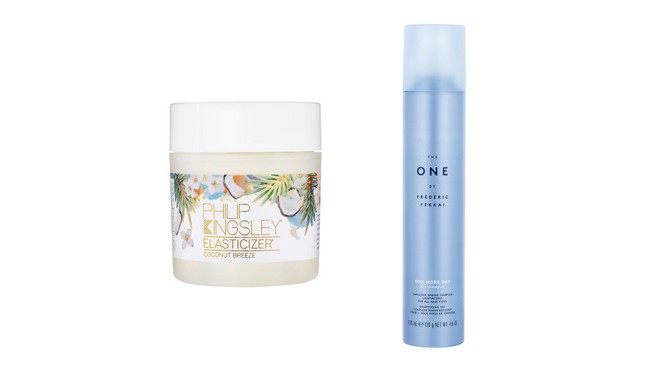5 Hair Types No One Talks About (and How to Deal With Them)
Oily and dry, gray and dyed, natural and relaxed—whatever your hair combo, these expert tips will restore harmony.
By Melissa Goldberg
Oily Roots + Dry Ends
While this combo can apply to any hair type, it's most common among those with fine strands. "Every hair is attached to its own oil-producing sebaceous gland," says Anabel Kingsley, a trichologist and director of communications at Philip Kingsley. "When you have fine hair, each strand takes up less space, so you actually have more hair—and more oil glands—per square inch than other types." And because the ends are the oldest part, which is true of all hair types, they've accumulated the most damage—hello, dryness.
Wash: The key to choosing a shampoo and a conditioner? Look for the word volumizing. These products give hair a lift by removing oil and buildup, but also hydrate dry ends with light conditioning agents—not concentrated oils that can weigh down your strands, says Procter & Gamble/Pantene principal scientist Rolanda Johnson Wilkerson, PhD. For maximum body boosting, apply conditioner from the midlengths to ends only. Philip Kingsley Coconut Breeze Elasticizer, $53; PhilipKingsley.com.
Treat: Indulge in some TLC with a weekly preshampoo treatment, says Kingsley. These oils, masks, or deep conditioners are applied to wet or dry hair and left on from five to 30 minutes or more, allowing active ingredients to either remove dirt and excess oil or provide a surge of moisture. (Feel free to alternate or treat the issue that's most troublesome.) Afterward, shampoo to wash away residue and condition.
Style: Avoid oil-based products, which can contribute to greasiness around the hairline, and super-hold hairsprays and gels that may further dry out brittle ends. You may also want to rethink your dry shampoo technique: Apply it preventively rather than waiting until your hair looks greasy, says NYC hairstylist Matt Fugate. (His tip for avoiding chalk-colored roots: Once you've finished your regular styling regimen, spritz your hairbrush with dry shampoo and run it through your roots.) The One by Frédéric Fekkai One More Day Dry Shampoo, $26; Ulta.com.
Wash: The key to choosing a shampoo and a conditioner? Look for the word volumizing. These products give hair a lift by removing oil and buildup, but also hydrate dry ends with light conditioning agents—not concentrated oils that can weigh down your strands, says Procter & Gamble/Pantene principal scientist Rolanda Johnson Wilkerson, PhD. For maximum body boosting, apply conditioner from the midlengths to ends only. Philip Kingsley Coconut Breeze Elasticizer, $53; PhilipKingsley.com.
Treat: Indulge in some TLC with a weekly preshampoo treatment, says Kingsley. These oils, masks, or deep conditioners are applied to wet or dry hair and left on from five to 30 minutes or more, allowing active ingredients to either remove dirt and excess oil or provide a surge of moisture. (Feel free to alternate or treat the issue that's most troublesome.) Afterward, shampoo to wash away residue and condition.
Style: Avoid oil-based products, which can contribute to greasiness around the hairline, and super-hold hairsprays and gels that may further dry out brittle ends. You may also want to rethink your dry shampoo technique: Apply it preventively rather than waiting until your hair looks greasy, says NYC hairstylist Matt Fugate. (His tip for avoiding chalk-colored roots: Once you've finished your regular styling regimen, spritz your hairbrush with dry shampoo and run it through your roots.) The One by Frédéric Fekkai One More Day Dry Shampoo, $26; Ulta.com.
From the November 2017 issue of O, The Oprah Magazine


